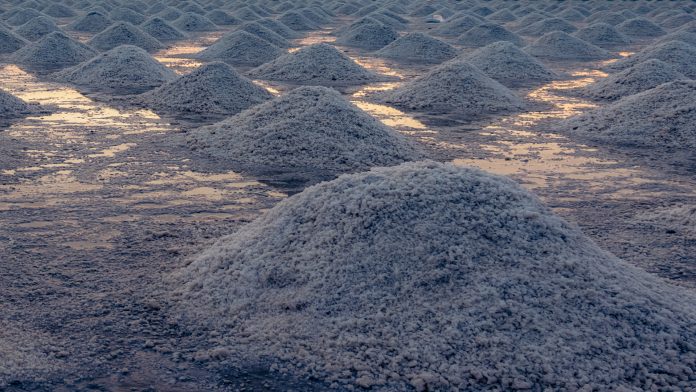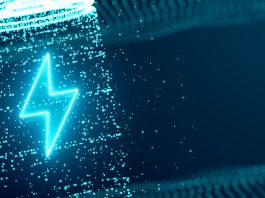Go2Lithium is at the heart of the developing lithium industry, and their cDLE technology is a testament to this and their commitment to improving lithium extraction processes.
Go2lithium’s continuous direct lithium extraction technology demonstrates that lithium extraction can be quicker, cheaper, and more sustainable. They now work with several projects, including the Boardwalk Lithium Brine Project, ran by Lithium Bank.
The Innovation Platform spoke to Livia Mahler, CEO of Go2Lithium, to find out more.
What advantages does G2L’s lithium extraction technology provide for the Boardwalk Lithium Brine Project?
Go2Lithium Inc (G2L) stands as a pioneer in the global lithium industry, leveraging cutting-edge technologies and strategic partnerships to maximise the value of lithium brine assets. At the core of G2L’s innovation lies the continuous direct lithium extraction (cDLE®) process, promising unmatched lithium recovery rates and cost efficiency, as showcased in Lithium Bank’s recently updated Preliminary Economic Assessment (PEA) for the Boardwalk Project.
The implementation of cDLE® within the Boardwalk flowsheet has brought step-gain improvements to lithium extraction and purification processes. Notably, G2L’s technology has delivered the highest purity concentrated lithium solution (eluate) among the 15 technologies evaluated by the project team. This achievement is attributed to the optimisation of DLE adsorption and desorption processes, employing counter-current configurations.
The adsorption step is further intensified using alternative process vessels and pH control to ensure near-complete extraction of lithium from the incoming brine, saturation of the mineral sorbent with lithium and suppression of the co-extraction of impurities.
The process chemistry shift in the desorption step also facilitates partial purification. By precipitating impurities and leaving lithium in solution, cDLE® reduces the impurity burden on downstream refining processes. This translates into enhanced process efficiency, including improved recovery rates, reduced circulating loads, and lower processing costs for the refinery.
Can you highlight the most significant improvements for the project?
Adopting G2L’s lithium extraction technology into the Boardwalk flowsheet has bolstered project economics in two pivotal ways, positioning it for success, irrespective of short-term fluctuations in lithium price.
Firstly, G2L’s technology builds upon our rich legacy in employing ion exchange methodologies for the extraction of valuable metals, such as uranium or gold, from dilute streams in hydrometallurgical facilities. This expertise has been integrated into the Boardwalk project, where our advanced DLE circuit boasts a remarkable lithium recovery rate exceeding 98%. This meticulous focus on recovery isn’t just a technical feat; it’s a strategic approach that significantly enhances project value. By maximising lithium extraction, we not only amplify revenue streams but also optimise the utilisation of resources, mitigating the capital and operating costs associated with brine extraction and processing.
Secondly, G2L’s innovative technology introduces a diverse array of process vessel designs derived from various metal recovery applications. These designs are engineered to withstand challenges such as suspended solids and precipitate formation, ensuring robust performance even in the most demanding operational environments. In the context of the Boardwalk Project, this versatility has enabled a paradigm shift in process chemistry. By embracing cost-effective industrial reagents like quicklime and sulfuric acid, we’ve transcended the conventional reliance on sodium hydroxide and hydrochloric acid, slashing operating costs without compromising on performance. The cDLE approach has reduced the OPEX by 34%. When combined with increased lithium recovery, an additional $600m in NPV is delivered to the project.
In essence, integrating G2L’s technology isn’t merely a technological upgrade – it’s a shift that unlocks the full potential of the Boardwalk project. Through improved recovery rates and optimised process chemistry, our lithium extraction technology paves the way for success throughout the asset’s life.
What importance does the project’s location in Alberta have?
Alberta emerges as a pivotal location for building a lithium project due to its strategic advantages and the global context of lithium deposits. Thinking about global deposits, we know that three-quarters of all lithium is associated with brine deposits, with the remaining one-quarter associated with hard-rock deposits, and whilst South America’s Lithium Triangle garners attention for its brine deposits, concerns over sovereign risk and environmental sustainability underscore the need for alternative sources. This is where Alberta’s Leduc Formation in western Canada shines.
Canada, with its recognised expertise in extractive technologies, provides a solid foundation for such projects. Alberta’s history of over 50 years of large-scale industrial activity in the oil sands further solidifies its position as a nexus for energy transition resource development. For example, there are over 1,000 wells drilled on these claims during previous developments for oil and gas extraction. Emerging projects can benefit from rich historical data, expediting the delineation of a large-scale brine resource.
By establishing a lithium production facility in Alberta, North America gains a crucial asset for its battery industry. The region’s resource-rich landscape offers a local and reliable source of lithium, essential for powering electric vehicles and energy storage systems. This move reduces reliance on imports and strengthens domestic manufacturing capabilities, aligning with broader efforts towards self-sufficiency in strategic metals.
What measures are being taken to reduce the project’s carbon footprint?
Direct Lithium Extraction (DLE) offers some distinct environmental advantages over existing lithium production technologies and methods, such as spodumene mining and conventional evaporation of brines.
DLE emerges as a disruptive green technology due to its remarkable energy efficiency and reduced environmental impact. DLE processes require minimal energy input, leading to a carbon footprint equivalent to or even lower than that of conventional evaporation methods.
Furthermore, DLE boasts a significantly lower water footprint, alleviating stress on local water sources and ecosystems. By circumventing the need for extensive evaporation, DLE mitigates the environmental drawbacks associated with some traditional lithium extraction methods.
Overall, DLE promises a sustainable approach to lithium production, aligning with the global imperative to reduce carbon emissions and conserve water resources. Its adoption not only facilitates the transition towards cleaner energy solutions but also addresses environmental concerns associated with conventional extraction methods, fostering a more sustainable future for lithium production.
What are the next steps outlined by LithiumBank Resources Corp. for value creation and derisking efforts for the Boardwalk project?
Pilot plant operation is the next big step in the Boardwalk project’s value creation and derisking efforts. The cDLE® pilot plant was designed and constructed in Australia in late 2023 and arrived on-site in Calgary in early 2024.
The Calgary facility fit-out is well-advanced. Once completed, the pilot facility will permit processing of up to 10,000L/d of brine and yield equivalent to 3kg/d LCE. This means the Calgary facility will represent one of the largest DLE pilot plants in North America. The scale also represents an approximate 1:5000 scale of the future commercial production modules, which is consistent with scale-up factors used in other hydrometallurgical processes. Within the pilot plant itself, sufficiently large ion exchange equipment has been installed to permit direct scale-up of these process steps to the commercial plant, accelerating the Boardwalk Project development.
The facility is expected to be operational during the second quarter of 2024. Several piloting campaigns are planned as the Boardwalk Project advances into its feasibility studies phase of development. The company also anticipates that the facility will accelerate the company’s Park Place, and Saskatchewan lithium development properties.
Please note, this article will also appear in the 18th edition of our quarterly publication.









